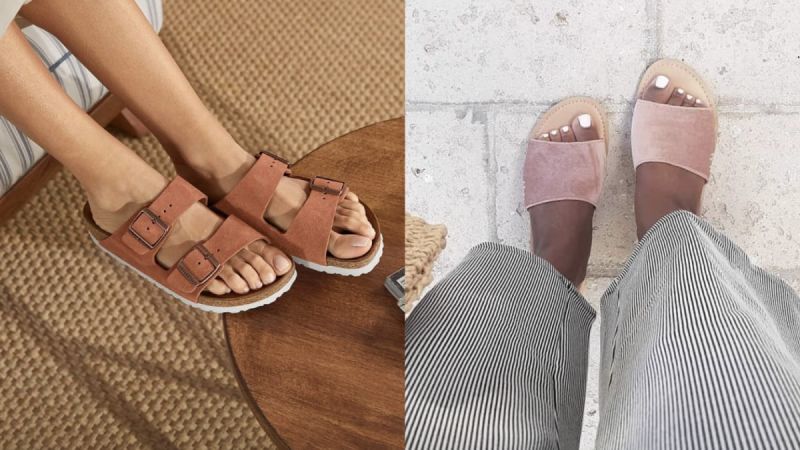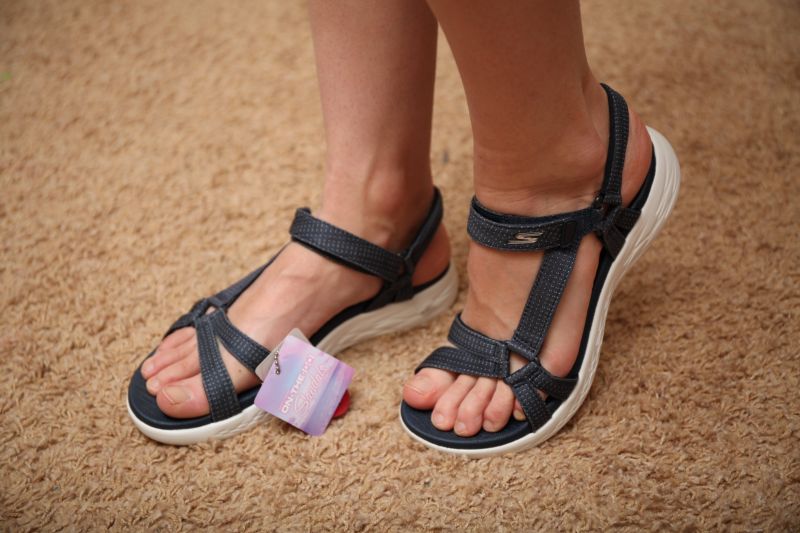How to choose the right lacrosse nets and backstops for your needs. What factors should you consider when purchasing lacrosse equipment. Which features are essential for different playing levels and environments. How to ensure durability and safety in your lacrosse gear selection.
Assessing Your Lacrosse Equipment Needs
When it comes to purchasing lacrosse nets and backstops in 2023, understanding your specific requirements is crucial. Are you a coach looking to outfit a team, or an individual player seeking personal practice equipment? The answer to this question will significantly influence your buying decision.
For team purchases, durability and cost-effectiveness are often top priorities. Individual players might prioritize portability and ease of setup. Regardless of your situation, considering the following factors will help you make an informed choice:
- Frequency of use
- Available storage space
- Transportation requirements
- Budget constraints
- Level of play (recreational, competitive, professional)
Fixed vs. Portable Lacrosse Backstops: Making the Right Choice
One of the first decisions you’ll face is whether to opt for fixed or portable lacrosse backstops. Each type has its own set of advantages and considerations.
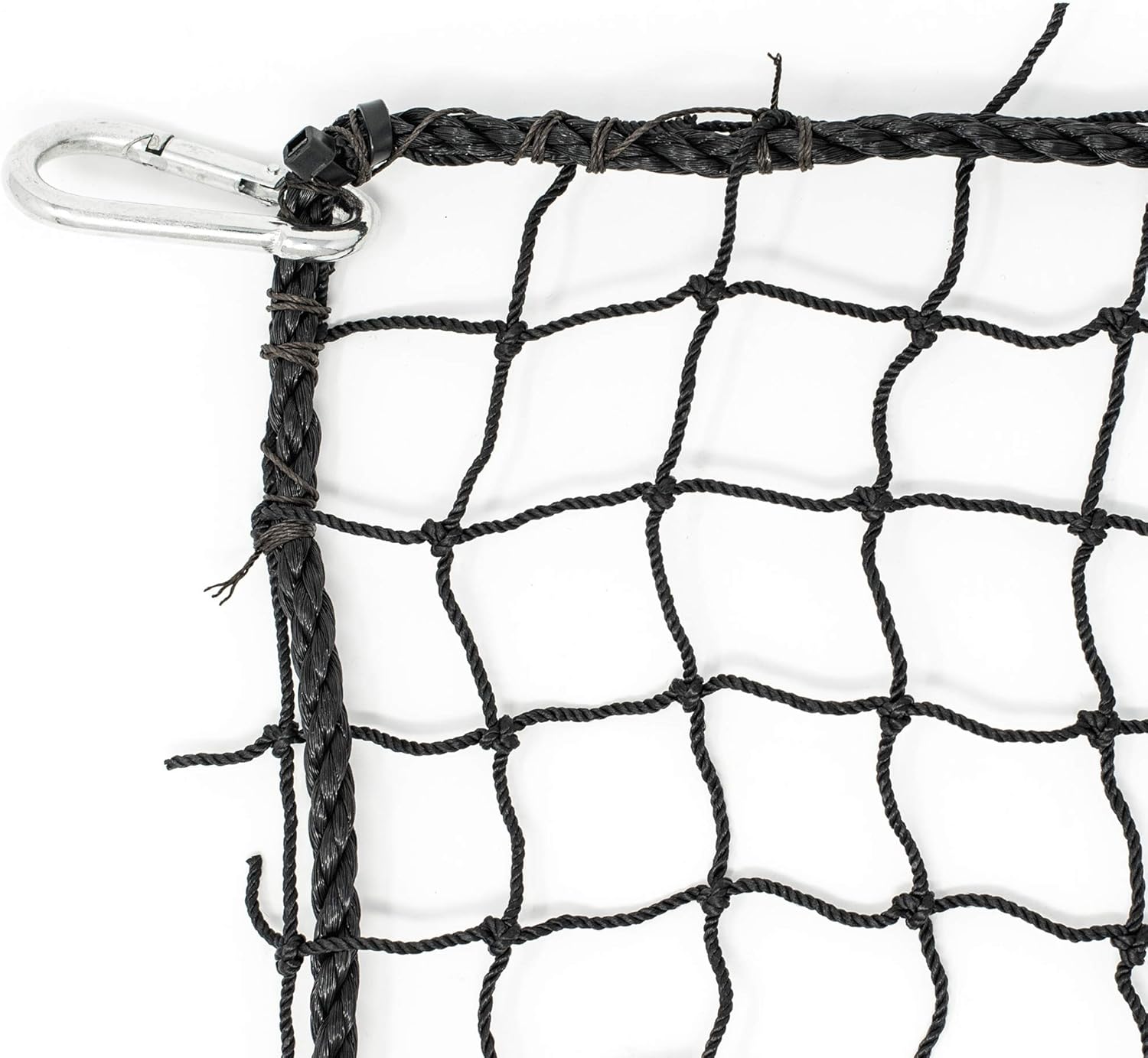
Fixed Backstops
Fixed backstops are permanently installed and offer superior stability. They’re ideal for dedicated lacrosse fields or practice areas where equipment doesn’t need to be moved frequently.
Advantages of fixed backstops include:
- Enhanced durability
- Increased stability in windy conditions
- Lower long-term maintenance requirements
Portable Backstops
Portable backstops provide flexibility and convenience, making them suitable for teams or players who need to set up and take down equipment regularly.
Benefits of portable backstops include:
- Easy transportation and storage
- Versatility in setup locations
- Ideal for multi-use fields or limited space
Material Matters: Choosing the Right Lacrosse Net Composition
The material of your lacrosse net plays a crucial role in its performance and longevity. Modern lacrosse nets are typically made from synthetic materials, each with its own characteristics.
Polyethylene Nets
Polyethylene is a popular choice for lacrosse nets due to its durability and weather resistance. High-density polyethylene (HDPE) nets offer excellent strength and can withstand high-velocity shots without breaking or fraying.
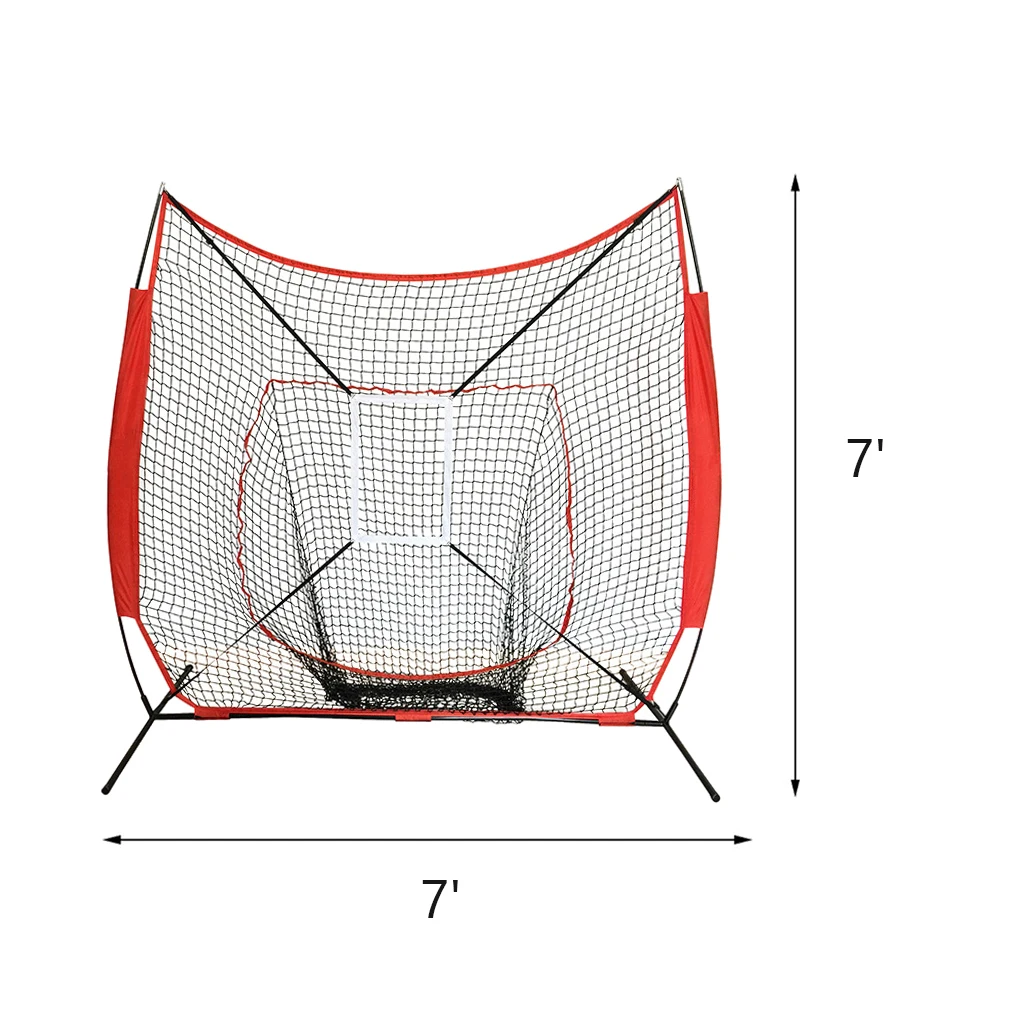
Nylon Nets
Nylon nets are known for their lightweight properties and resistance to stretching. They’re often used in portable goals and practice equipment due to their ease of handling and setup.
Hybrid Materials
Some manufacturers use hybrid materials, combining the strengths of different fibers to create nets that offer the best of both worlds – durability and lightweight handling.
Size and Dimensions: Ensuring Regulation Compliance
Choosing the correct size for your lacrosse net and backstop is essential, especially if you’re purchasing for official games or tournaments. Regulation lacrosse goals have specific dimensions that must be adhered to:
- Goal opening: 6 feet wide by 6 feet high
- Depth of the goal: 7 feet from the goal line to the back of the net
- Backstop height: Generally extends 6 to 9 feet above the crossbar
For practice purposes or youth play, smaller goals may be appropriate. Always check with your league or organization for specific size requirements before making a purchase.
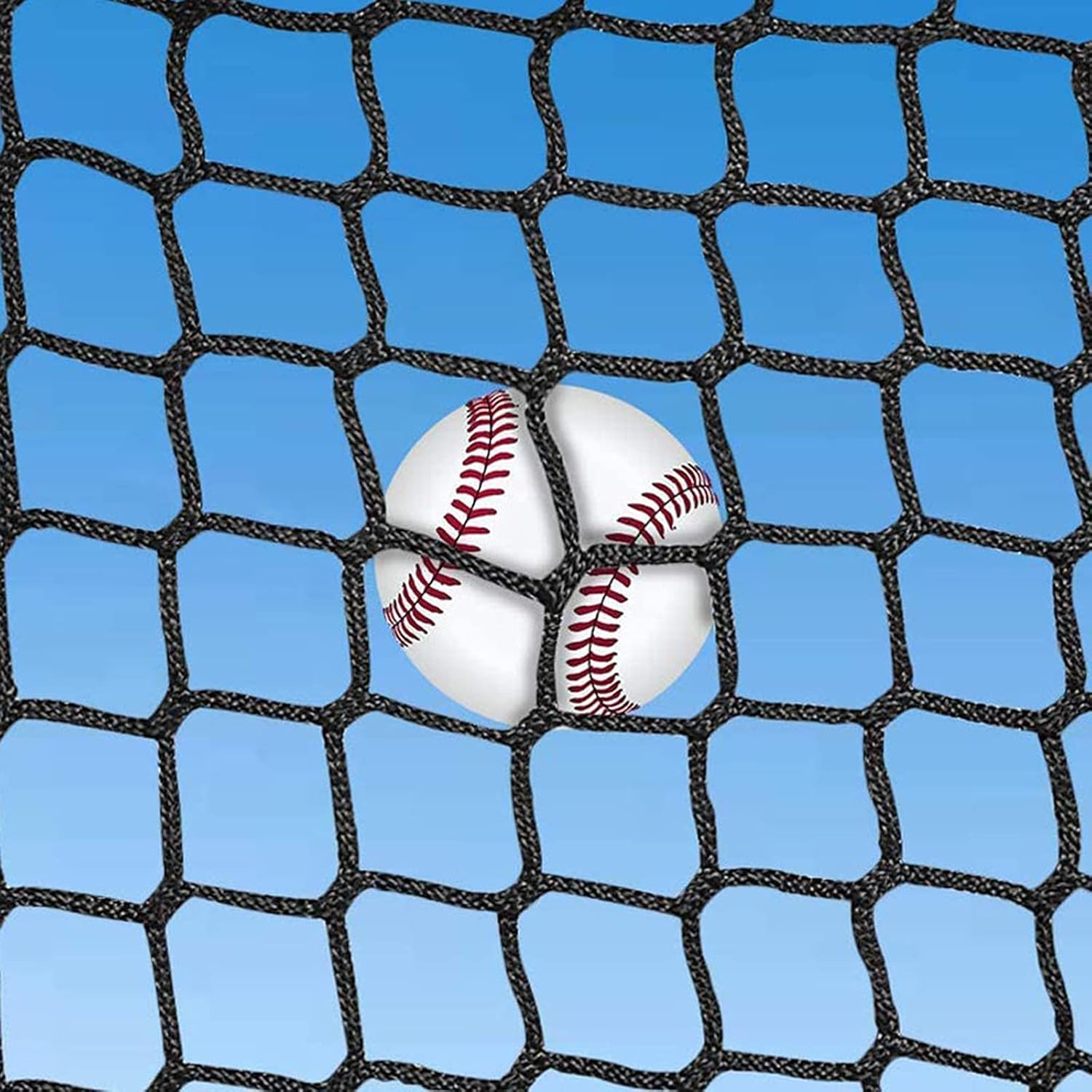
Weather Resistance: Protecting Your Investment
Outdoor lacrosse equipment is exposed to various weather conditions, which can significantly impact its lifespan. When selecting nets and backstops, consider their ability to withstand environmental factors such as:
- UV radiation
- Rain and moisture
- Extreme temperatures
- Wind
Look for products with UV-resistant coatings and weather-treated materials to ensure longevity. Some manufacturers offer specialized all-weather nets and backstops designed to withstand harsh conditions without degrading.
Safety Features: Prioritizing Player and Spectator Protection
Safety should be a top priority when selecting lacrosse equipment. High-quality nets and backstops not only improve play but also protect players and spectators from errant shots.
Backstop Design
Effective backstops should extend well beyond the goal frame to catch wide shots. Look for designs that offer:
- Adequate height to stop high shots
- Sufficient width to cover shots that miss the sides of the goal
- Shock-absorbing materials to reduce ball ricochet
Net Tensioning Systems
Proper net tension is crucial for both performance and safety. Modern lacrosse goals often feature:
- Quick-release tensioning systems for easy setup and takedown
- Adjustable tension to accommodate different playing styles
- Reinforced corners to prevent tearing and maintain shape
Portability Features: Ease of Transport and Setup
For teams or players requiring mobile equipment, portability features can make a significant difference in convenience and usability. When evaluating portable lacrosse nets and backstops, consider the following:

Weight and Collapsibility
Lightweight materials and collapsible designs facilitate easy transportation. Look for:
- Aluminum or lightweight steel frames
- Folding or telescoping backstop supports
- Carrying bags or cases for compact storage
Setup Time
Quick and easy setup is essential for efficient practice sessions. Features that enhance setup speed include:
- Tool-free assembly
- Color-coded or numbered parts for intuitive construction
- Pre-attached nets to reduce setup steps
Durability and Longevity: Maximizing Your Investment
Investing in durable lacrosse equipment can save money in the long run by reducing the need for frequent replacements. When assessing the durability of nets and backstops, pay attention to:
Frame Construction
The goal frame should be sturdy enough to withstand impacts and environmental stress. Look for:
- Corrosion-resistant materials like galvanized steel or anodized aluminum
- Reinforced joints and connection points
- Powder-coated finishes for added protection
Net Quality
High-quality nets resist wear and tear from repeated shots. Seek out:
- Knotless designs to reduce weak points
- UV-stabilized fibers for outdoor use
- Reinforced edging to prevent fraying
Budget Considerations: Balancing Cost and Quality
While it’s tempting to opt for the cheapest option available, investing in quality lacrosse equipment can provide better value over time. Consider the following when budgeting for nets and backstops:
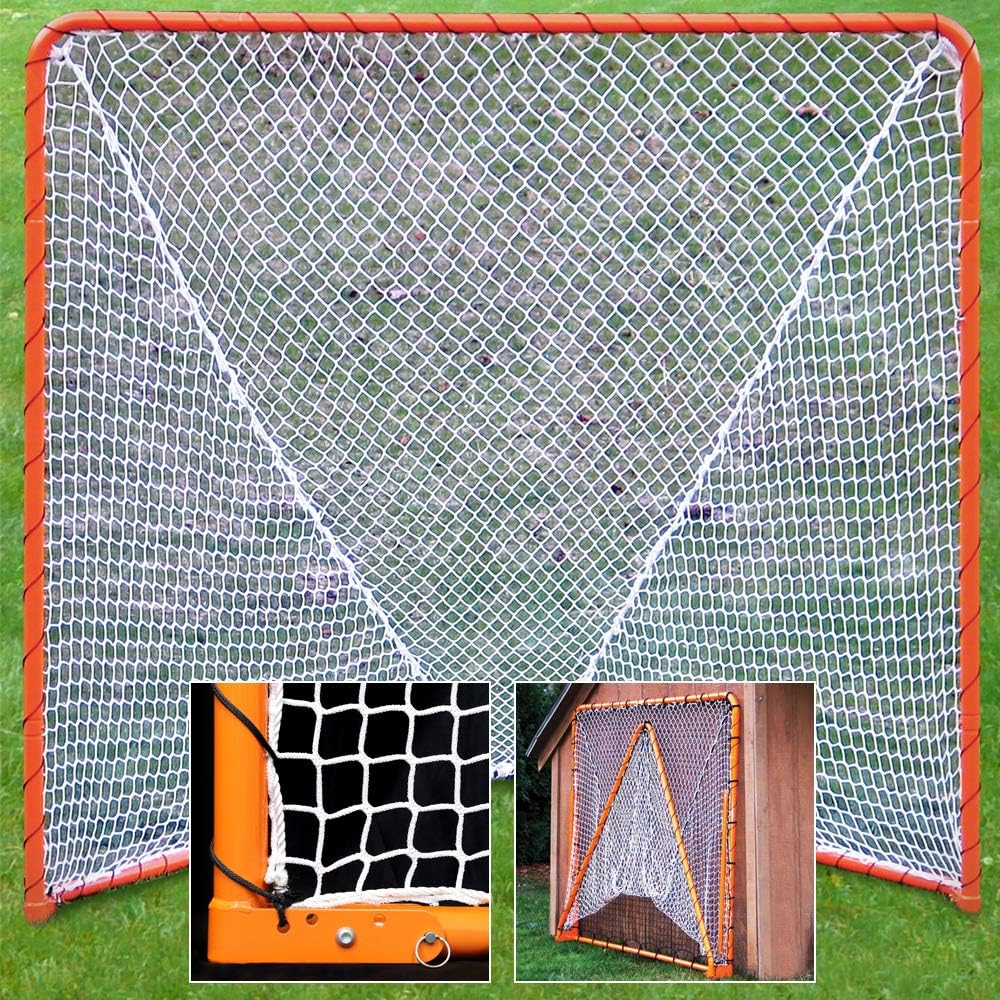
Long-Term Cost Efficiency
Higher upfront costs for durable equipment may result in savings due to:
- Reduced replacement frequency
- Lower maintenance costs
- Improved performance leading to better player development
Package Deals
Many manufacturers offer package deals that include both nets and backstops. These can provide cost savings compared to purchasing items separately. Look for:
- Complete goal sets with frame, net, and backstop
- Multi-goal packages for team or league purchases
- Bundles that include additional accessories like ground stakes or carrying bags
Brand Reputation and Customer Support
Choosing equipment from reputable brands can provide peace of mind and ensure access to quality customer support. When evaluating brands, consider:
Company History
Established brands with a long history in lacrosse equipment often have:
- Proven track records of product quality
- Extensive experience in equipment design and innovation
- Strong relationships with lacrosse organizations and teams
Warranty and Support
Look for brands that stand behind their products with:
- Comprehensive warranty coverage
- Responsive customer service
- Easy access to replacement parts and repairs
Customization Options: Tailoring Equipment to Your Needs
For teams or organizations looking to create a unique identity, customization options can add value to lacrosse equipment purchases. Consider the following customization possibilities:

Branding and Colors
Many manufacturers offer customization services, including:
- Team logos on backstops or goal frames
- Custom color schemes to match team uniforms
- Personalized text or player numbers on equipment
Modular Systems
Some lacrosse goal systems offer modular components, allowing for:
- Interchangeable parts for different playing scenarios
- Upgradable features as needs change
- Customizable configurations for varied practice drills
Maintenance and Care: Extending Equipment Lifespan
Proper maintenance can significantly extend the life of your lacrosse nets and backstops. When making your purchase, consider the maintenance requirements and available care instructions:
Cleaning and Storage
Look for equipment that is easy to clean and store, with features such as:
- Removable nets for washing
- Weather-resistant materials that can be left outdoors
- Compact folding designs for off-season storage
Repair and Replacement
Choose products that offer:
- Easily replaceable parts
- Clear instructions for common repairs
- Availability of spare components for quick fixes
Environmental Impact: Sustainable Choices in Lacrosse Equipment
As environmental concerns become increasingly important, consider the ecological impact of your lacrosse equipment choices. Look for manufacturers that prioritize sustainability through:

Eco-Friendly Materials
Some companies are now offering nets and backstops made from:
- Recycled plastics
- Biodegradable or compostable fibers
- Sustainably sourced raw materials
Production Practices
Research brands that demonstrate commitment to environmental responsibility through:
- Energy-efficient manufacturing processes
- Reduction of packaging waste
- Carbon offset programs or other eco-initiatives
By considering these factors and thoroughly researching your options, you can make an informed decision when purchasing lacrosse nets and backstops in 2023. Remember to prioritize your specific needs, balance quality with budget constraints, and think long-term about the durability and maintenance of your equipment. With the right gear, you’ll be well-equipped to enjoy the game of lacrosse to its fullest potential.
Consider if a Complete Lacrosse Goal Set or Individual Net is Better For You
As the 2023 lacrosse season approaches, players and coaches alike are starting to think about replacing old and worn out lacrosse nets and backstops. With so many options on the market, it can be tricky figuring out exactly what you need for your practice and game setup. Here is a comprehensive 15-point guide to walk you through all the key factors when looking to purchase new lacrosse nets and backstops this year.
The first decision to make is whether you want to buy a complete lacrosse goal set or just replacement nets and backstops. Complete sets come with the full goal frame and netting already assembled and ready to use right out of the box. This is often the simplest option, especially for youth and high school teams with limited setup time and resources. Brands like STX, Gladiator, and PowerShaft offer complete sets with competition-level durability. If your goals are still in good shape but the nets are getting worn, then going with individual net and backstop replacements may make more sense economically.
When looking at individual nets, pay close attention to the overall quality. Lacrosse balls can do a number on poor netting very quickly. Opt for thicker gauge knotless polyethylene nets that can stand up to high velocity shots. Top brands like NetWorld and Maverik use advanced polymer blends and durable stitching designed specifically for lacrosse. Make sure to check the size chart and get a net with a generous allowance beyond the goal opening for proper bagging.
Durability and safety are also key factors for lacrosse backstops. These prevent missed shots from sailing out of play and injuring spectators. Look for backstops made from high-density polypropylene that can flex without breaking. The best backstops extend well above and around the netting and allow for multiple mounting positions. Models from Guardian Lax, Geau Lacrosse, and PowerShaft offer excellent coverage options to suit any practice or game setup.
For youth teams on a budget, value packs with multiple nets and backstops can be a cost-effective option. Brands like PowerNet Lacrosse, Gladiator, and Guardian Lax provide complete goal packages or multi-packs of replacement gear for parents and league organizers. Focus on finding sets made from weather and UV-resistant materials to maximize durability.
Those playing or coaching at the college and pro levels need nets and backstops designed for elite play. Look for thicker, parachute-style netting paired with commercial grade steel backstops from brands like Gladiator and Guardian Lax. For a professional look, Rukket Sports offers nets with team nameplates and logos along with durable backdrops.
Consider how portable your nets and backstops need to be. Some leagues and teams need gear that can be easily taken down and transported from venue to venue. Collapsible backstops along with foldable nets from Gait, PowerNet Lacrosse, and Guardian Lax offer efficient setup and takedown for mobile programs.
Be sure to factor in weather resistance for any outdoor gear purchases. Extended exposure to rain, sun, and snow can quickly degrade cheap netting and frames. Seek out UV-treated nets and powder-coated steel backstops to prevent premature cracking and discoloration.
Those playing box lacrosse have some unique net and backstop considerations. Made-for-box nets from Harrow Sports and PowerNet feature thinner polyethylene for lightning-fast rebound response. Box-style backstops wrap around two adjacent goal faces while stopping missed shots. Champion Sports makes an affordable and easy-to-install option.
Do some measurements ahead of time to ensure proper net and backstop sizing. Regulation lacrosse goals are 6 x 6 feet, but
Here is a 1000+ word article on purchasing lacrosse backstops and nets:
Decide Between Fixed and Portable Lacrosse Backstops For Your Needs
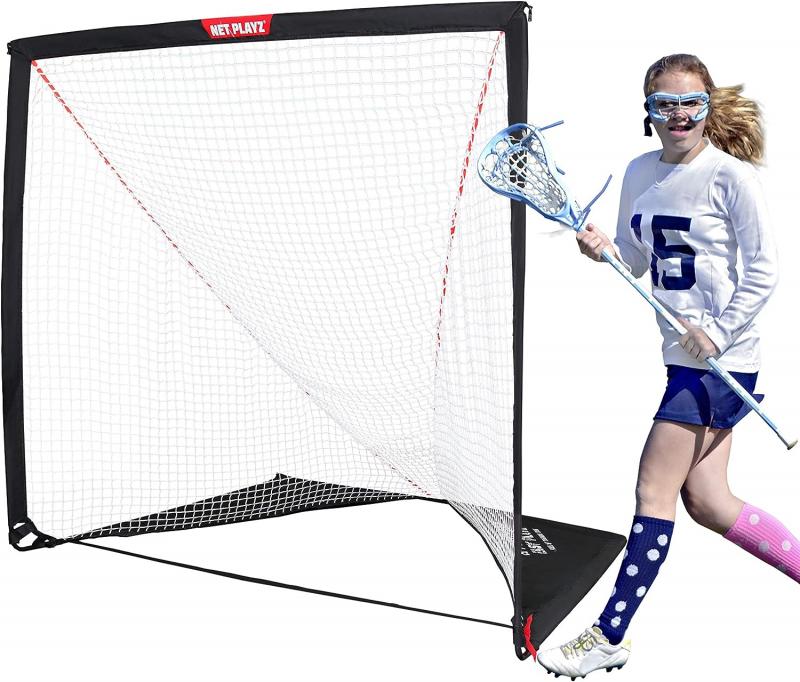
If you’re looking to buy new lacrosse nets and backstops in 2023, there are a variety of factors to consider before making your purchase. With both fixed and portable options available, you’ll need to think about your specific needs and setup to determine the best choice. Here is a 15-point guide covering the key points to help you make an informed decision when investing in new lacrosse goal equipment.
1. Space Available
First, look at the space you have available for setting up a lacrosse playing and practice area. Fixed backstops require permanently installing poles and framing into the ground, so you need adequate room for this. Portable goals can be moved around and stored when not in use. If you have limited space, a portable net and backstop offers more flexibility.
2. Portability Needs
Consider if you need to move the goals frequently. Portable lacrosse backstops allow for easy transportation for games, tournaments, or practices in different locations. Wheeled and folding designs make portability simple. Fixed goals remain stationary once installed.
3. Ground Surface Material
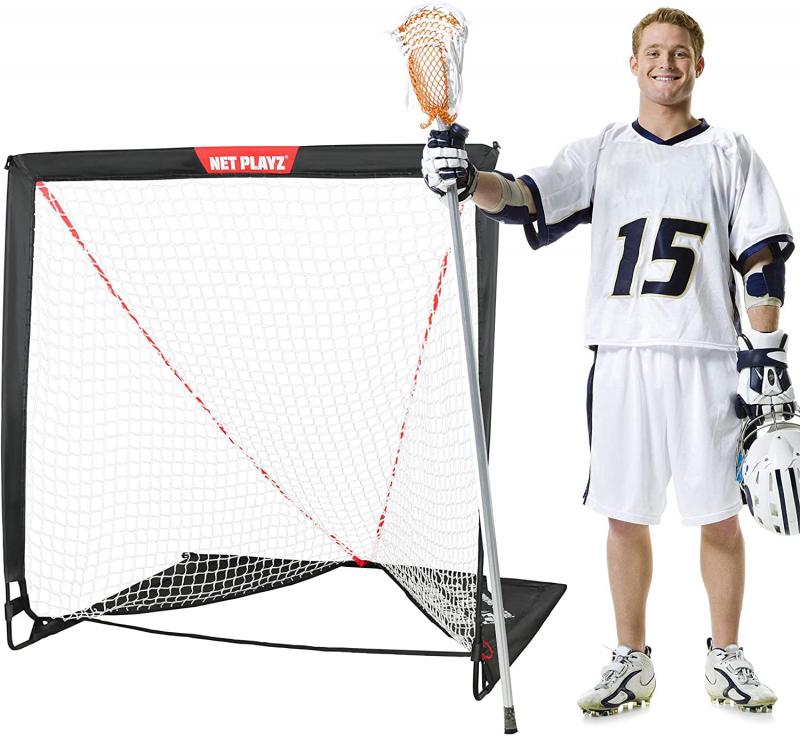
What surface will you place the backstop and goal on? Fixed options require digging holes for installation, so work best on grass or dirt. Portable backstops are easily set up on any flat surface like grass, turf, concrete, or blacktop.
4. Wind Resistance
Wind can wreak havoc on unsecured lacrosse netting and framing. Permanently installed backstops with underground poles offer the most wind-resistance. Sturdy portable designs also work well, while flimsier options may need sandbags or stakes to stay grounded in high winds.
5. UV and Weather Resistance
Look for backstops and netting made with UV-resistant materials if the gear will be left outside exposed to sun and rain. Aluminum or powder-coated steel frames and synthetic, weather-treated netting hold up best.
6. Safety
Player safety should be a top priority. Padded posts reduce hard collisions from missed shots. Nets should fully enclose the backstop to prevent errant balls leaving the playing area. Portable goals should have wide, angled out feet for stability.
7. Rebound Performance
Nets and framing should offer consistent, predictable rebound of shots for best practice. Taut netting strung in a grid pattern performs better than chain link fencing. Fixed backstops usually rebound shots more uniformly than portable goals.
8. Size
Lacrosse goals are typically 6 feet (1.8m) x 6 feet (1.8m). Youth goals may be smaller. Backstop enclosures are 10-20 feet wide (3-6m) x 10-20 feet tall (3-6m). Measure your space to ensure the backstop and goal you choose will fit appropriately.
9. Durability
Look for sturdy construction and premium materials built to handle tough outdoor use and abuse from lacrosse balls. Aluminum, high-grade steel, and synthetic netting last longer than cheaper components.
10. Assembly Required
Portable backstops require home assembly. Make sure you have the tools, time, and patience for the task. Permanently installed options involve professional goal installation for proper setup, concrete work, and site preparation.
11. Usage Frequency
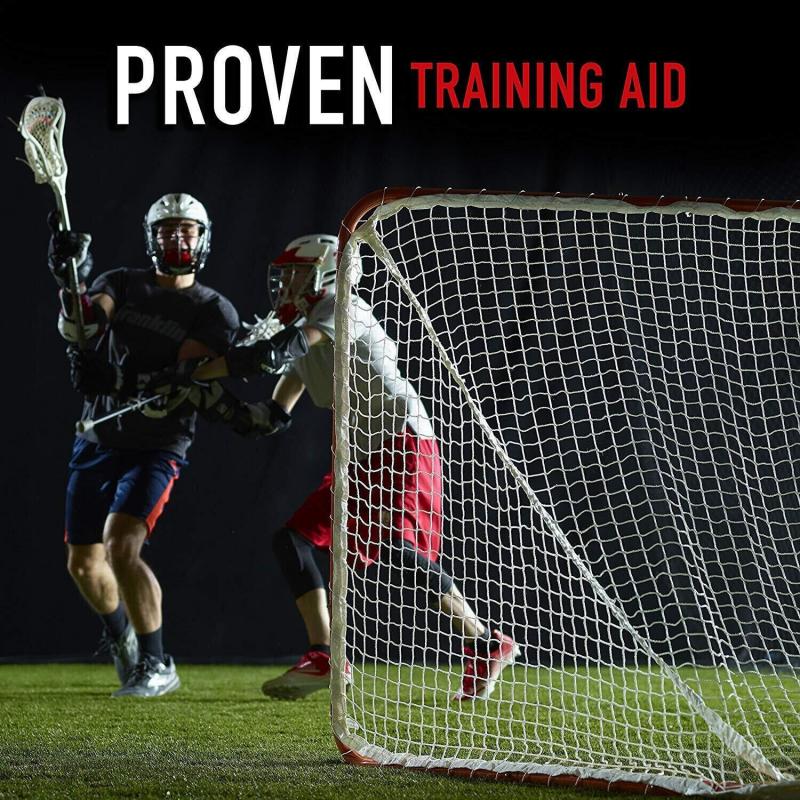
Consider how often the goal and backstop will be used. Products designed for schools, clubs, or frequent recreational play should offer greater durability than gear meant for occasional light use.
12. Aesthetics
Both fixed and portable backstops come in a range of frame finish and netting colors to match team branding or blend in with surroundings. Pick options complementing your location.
13. Budget
Portable lacrosse backstops are generally cheaper than permanent in-ground models. Prices range from around $100 for basic portable goals to $2,000+ for regulation-size, professionally installed fixed backstops with team branding.
14. Warranty
Look for at least 1 year warranties on frames and netting. Weather and UV damage should also be covered. This protects against early failure of key components.
15. Reviews
Check feedback and reviews on lacrosse equipment sites to compare real customer experiences with different backstops. This helps assess quality and durability claims.
Following this comprehensive buying guide will help you consider all the important factors when investing in new lacrosse goals and backstops. Analyzing your specific needs and setup will let you determine if fixed or portable designs make the most sense. Carefully comparing materials, features, sizes, and warranties allows you to choose options matching your budget that will provide a safe, durable, high-functioning addition to your lacrosse training space.
Shop Top Lacrosse Netting Brands Like Brine & STX For Quality
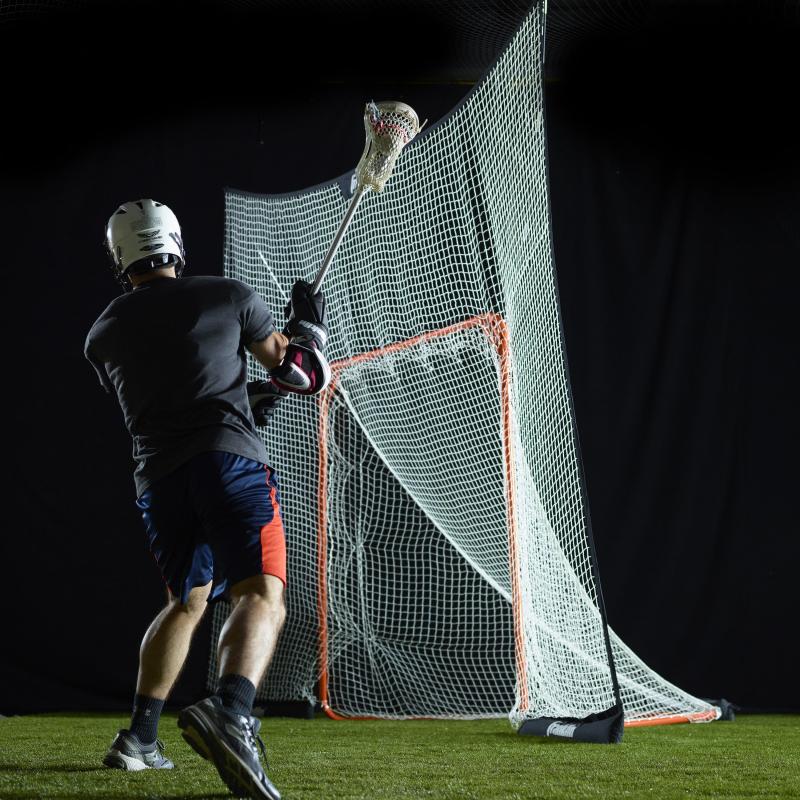
When investing in new lacrosse nets and backstops, going with a top brand provides confidence you’re getting a high-quality product built to perform. With so many options on the market, it helps to focus on industry leaders known for their expertise crafting goal netting designed for precision rebound and all-weather durability. Here’s an overview of some of the premier lacrosse netting manufacturers to choose from.
Brine
Brine is one of the most trusted names in lacrosse equipment. They offer a full range of fixed and portable backstops and replacement netting preferred by players and coaches for consistent ball rebound. Their Max Life netting utilizes a DuPont polymer coating to prevent UV damage. Galvanized steel frames and aluminum poles stand up to extreme weather. Brine’s lacrosse nets come in a variety of colors and can be customized with team logos.
STX
STX makes professional-grade lacrosse nets built for elite play. Their backstops feature a tight 3.5” square knotless netting grid that rebounds shots with precision. The Stadion portable goal series offers tool-free assembly and wheels for easy transport. STX’s fixed goal frames are constructed from heavy-duty steel to prevent rusting and bend resistance. From youth to college level, STX nets provide top-notch quality.
Rukket
Known for their hockey training equipment, Rukket also produces high-performance lacrosse nets. Their Tri-Turf netting works great for multifunction areas, suitable for lacrosse, soccer, and hockey practice. The netting attaches easily to their portable frames with no tools required. Rukket lacrosse goals fold up conveniently for storage and transportation. They offer pro-level quality at very affordable pricing.
Gladiator
Gladiator makes competition-grade lacrosse nets designed for elite play and extreme durability. Their X60 netting is constructed from weatherproof 2mm triple-knotted polyethylene to prevent sagging and last many seasons. Gladiator’s lacrosse backstops feature robust steel frames with protective padding. They engineer netting and frames to absorb high-velocity shots without compromising ball rebound consistency.
Jaypro Sports
School athletic departments trust Jaypro for high-quality gymnasium and field equipment that survives student athletics. Their lacrosse netting is manufactured to be super rugged yet lightweight for portability. Jaypro nets attach easily to their folding goals for quick setup and break down. Their backstops and netting hold up impressively despite rough daily use and exposure to harsh outdoor elements.
Champion Sports
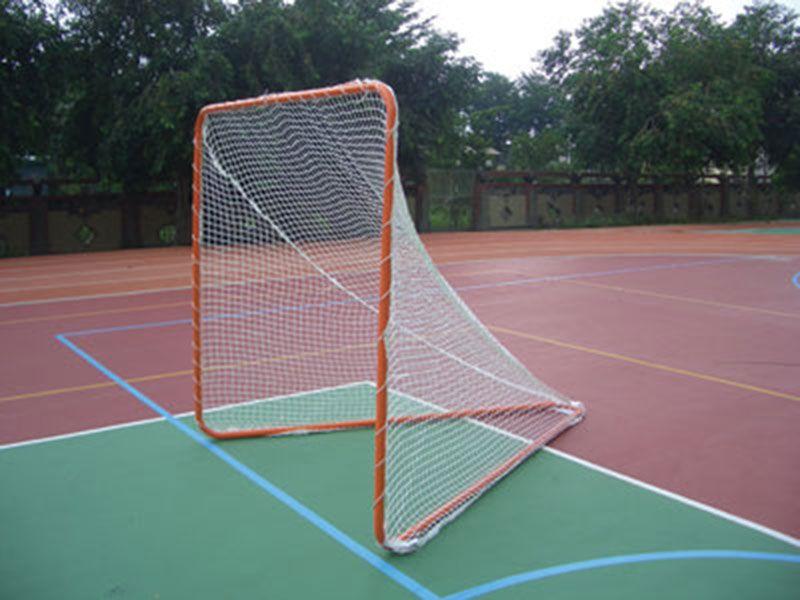
As a leading supplier of sports gear for schools, parks, and recreational programs, Champion Sports is a go-to choice for reasonably priced lacrosse nets built to last. Their netting is crafted from weather resistant polyethylene with reinforced double stitching for longevity. Fully enclosed backstops help protect surrounding areas from stray balls. Champion’s goals provide great performance for casual community use.
Net World Sports
Specializing in high-quality netting for many sports, Net World Sports produces pro-grade lacrosse goal netting in a variety of meshes, colors, and sizes. Players praise the consistent ball rebound of their Crossfire netting. Frames are available in multiple configurations from portable to permanent inground installation. Net World Sports also sells replacement lacrosse netting to refresh old goals.
ROG Sports
ROG Sports focuses on premium sports equipment built to excel at the highest levels. Their lacrosse backstops and netting are trusted by top colleges like Notre Dame and the University of Maryland for intense daily use. ROG utilizes aerospace-grade aluminum alloy framing and weatherproof polyethylene netting. Their Crystal netting rebounds shots with unmatched consistency through any conditions.
IMG Academy
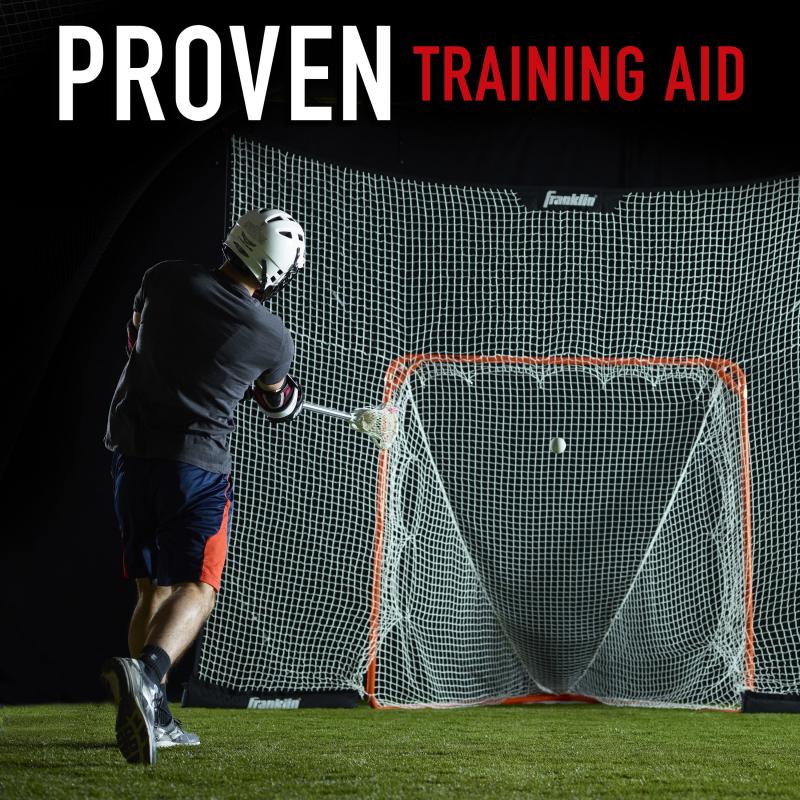
The elite IMG Academy training facility works closely with leading equipment brands to design lacrosse goals and netting that perform to their demanding standards. IMG lacrosse netting utilizes premium materials capable of absorbing thousands of high-velocity shots daily from top recruits and future pros. For players aspiring to improve their game, IMG nets provide unmatched durability.
When investing in new lacrosse netting and backstops, going with an established brand you can trust ensures you receive a high-quality product designed for precision play. Companies like Brine, STX, Rukket, Gladiator, Jaypro, Champion, Net World Sports, ROG, and IMG have demonstrated expertise crafting netting and frames built to excel through all weather conditions and levels of play from youth to college. Choose a top brand to confidently get nets and goals that will last while improving your game.
Choose Correct Lacrosse Net Mesh Size Based on Skill Level
One important factor when purchasing new lacrosse nets is selecting the appropriate mesh size for the skill level of players. Netting with different size grids leads to varied ball rebound behavior. Understanding these differences allows you to choose lacrosse nets that will optimize practice and gameplay at each level from beginner to pro.
Beginner Lacrosse Players
For new lacrosse players still learning proper throwing and catching technique, a larger mesh size in the 6 to 10 square inch range is ideal. This softer netting absorbs more ball momentum and is forgiving on off-target passes and wild catches. The mesh gives more like a trampoline, helping beginners gain confidence stick handling, passing, and scooping ground balls. A muted rebound allows players more time to react and develop hand-eye coordination.
Intermediate Lacrosse Players
As skills improve, intermediate players benefit from switching to mid-size mesh in the 3 to 6 square inch range. The decreased grid spacing increases ball rebound speed and accuracy. Faster ball return from the netting forces players to sharpen reflexes and solidify mechanics. Mid-size mesh prepares athletes for the quicker pace and precision required at higher levels of competitive play.
Advanced Lacrosse Players
Elite high school, college, and pro players utilize extra-small mesh lacrosse nets with 1.5 to 3 inch grid spacing. The tight weave causes extreme ball rebound velocity, reaction time, and aim challenge. Shots ricochet rapidly back toward shooters at high speeds, demanding focused precision. Smaller mesh improves passing and shot accuracy, catch readiness, footwork, and overall conditioning for game speed.
Goalies
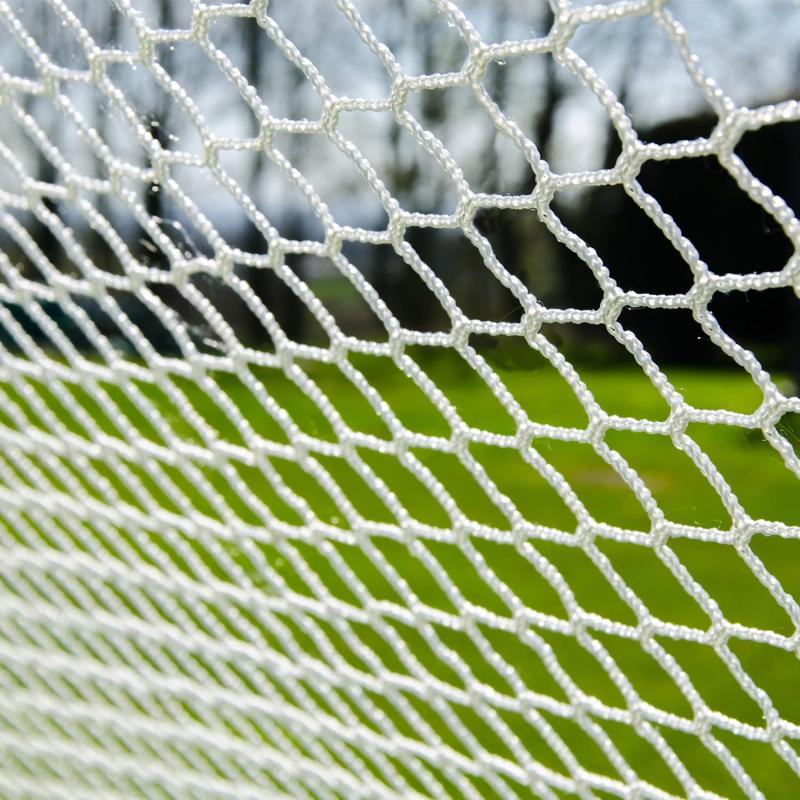
For goalies, reaction time and rebound unpredictability are vital skills. Netting with random mesh patterns force keepers to be continuously alert and sharp. Mixing different mesh sizes in a single net or using variable woven netting ensures goalies never quite know how saves will deflect off the webbing. Keepers must adapt to the randomness, preparing them for unpredictable shots in game action.
Indoor Lacrosse Nets
Indoor box lacrosse typically utilizes extra-small mesh for intensified rebound speed in close quarters. The tight net grid amps up the pace and pressure. Outdoors, small mesh is best suited for elite players. But narrow indoor playing areas make tight netting appropriate at all levels to match the uptempo enclosed game dynamics.
Outdoor Lacrosse Nets
Outdoor field lacrosse nets require appropriately larger mesh since playing areas are much bigger. Intermediate mesh provides a balance of pace, rebound precision, and forgiveness for learning players. Advanced and pro players still benefit from extra-small mesh for maximized rigor. But overly tight netting outdoor negatively impacts beginners before they develop fundamental skills.
Multipurpose Nets
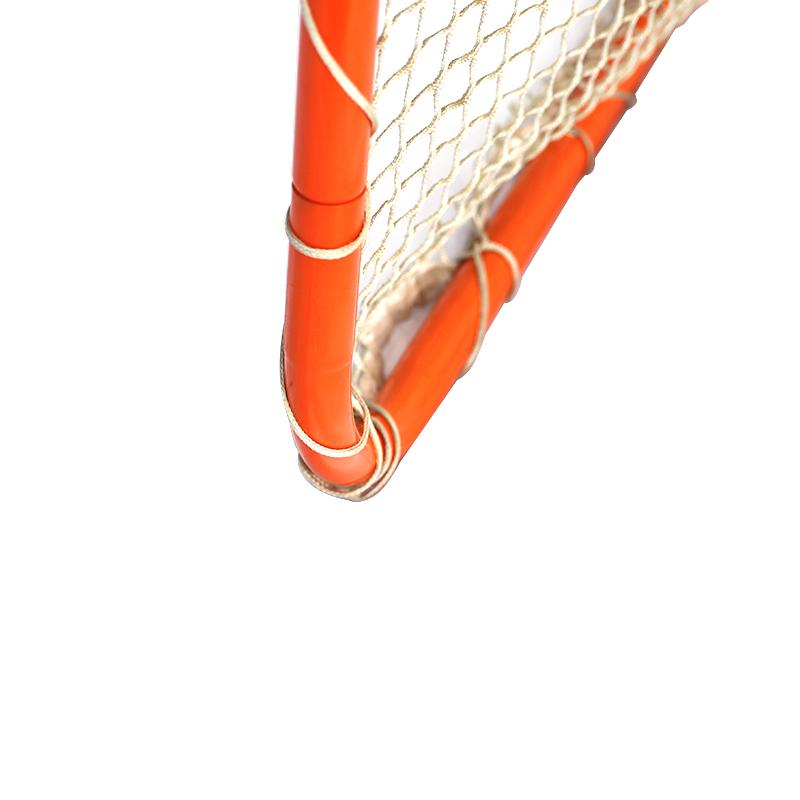
For lacrosse nets that will also be used for soccer, hockey, golf, and other sports training, choose medium mesh around 4 to 6 square inches. This versatile spacing provides suitable ball rebound and feel across multiple sports. The moderate grid intensity works for all skill levels. Compromising on a one-size-fits-all mesh allows the netting to multitask.
Women’s Lacrosse Nets
While suitable for both genders, some nets are tailored specifically for women’s lacrosse. These goals often utilize softer mesh in the 6 to 8 inch range to promote development of stick skills, catching, and passing. The muted rebound also reduces ball impact forces from close-range shots among younger female players. Graduating to smaller mesh builds game readiness.
Youth Lacrosse Nets
To set up young players for success as they learn the sport, youth lacrosse nets feature larger mesh around 6 to 10 square inches. This forgiving beginner-friendly grid ensures balls don’t rebound too quickly for developing hands and reflexes. But mesh should decrease in size as players improve through middle school and high school.
Choosing the appropriate lacrosse net mesh size based on skill level, age, gender, and playing environment allows athletes to get the most benefit from practice. While ultra-small mesh promotes elite skills, beginning and intermediate players build confidence and ability faster with larger grid netting. Assess your needs to select mesh optimized for your current abilities but still challenging enough to support improvement.
Pick Proper Backstop Netting Height For Maximum Protection
Lacrosse backstops provide an enclosed netting barrier behind the goal to contain errant shots and passes and protect surrounding areas. When investing in new nets and backstops, choosing the right enclosure height is key to maximizing safety and playability. Here are factors to consider when selecting lacrosse backstop netting height for your needs:
Regulation Height
Standard regulation height for full-size lacrosse backstop enclosures is 20 feet (6 meters). This provides sufficient coverage to prevent most overthrown balls from cleared the netting at competitive playing levels from high school to college. For even greater protection, backstop heights up to 30 feet are used by some elite college and pro programs.
Youth Height
For youth lacrosse programs, shorter 12 to 15 foot (3.6 to 4.5 meter) backstop heights are common. This scaled-down size accounts for lower shot height from younger beginner and intermediate players while still stopping most errant shots. Shorter backstops are also easier to install and require less netting material, lowering costs.
Field Size
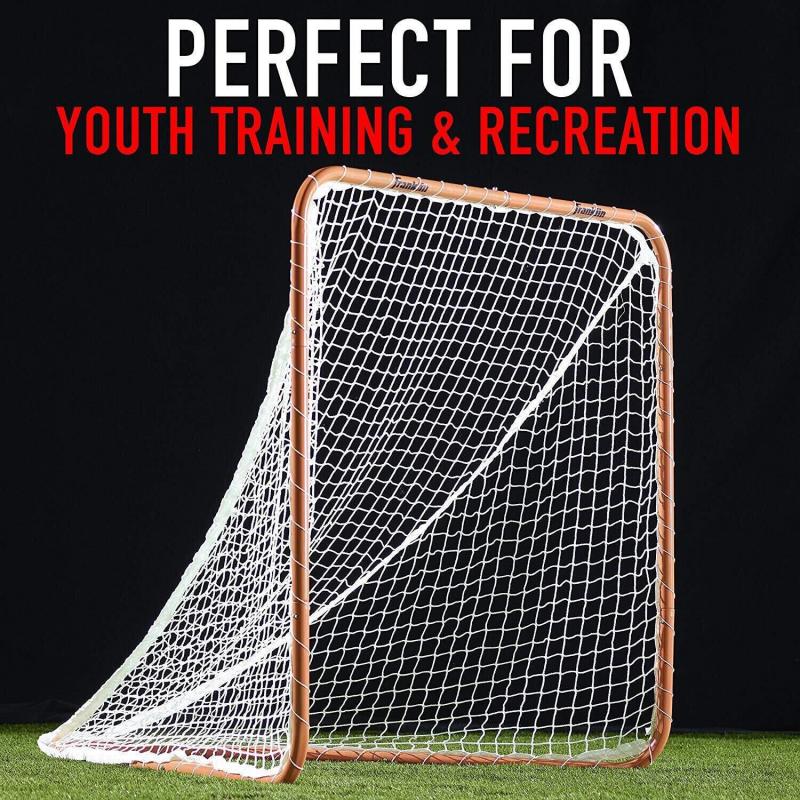
Consider the total dimensions of your lacrosse playing area when factoring ideal backstop height. For regulation-size fields, 20 foot enclosures contain shots from end to end. On smaller fields or indoor box lacrosse, lower 10 to 12 foot backstops suffices since players are always closer to the netting.
Spacing from Goal
Account for how far back the enclosure netting will be positioned behind the goal. Backstops placed tightly behind the goal frame require less height than enclosures located further back from the shooting area. Maximum protection comes from taller netting set back further from the goal mouth.
Skill Level
Backstop height should match the skill level of players to contain their maximum shot height and force. Youth and beginner backstops need less height, while advanced high school, college and pro players require full 20 foot enclosures for complete protection from rocket shots.
Safety Priorities
Consider proximity to roads, buildings, or other areas needing protection when factoring ideal backstop height. Also account for traffic patterns at facilities to maximize pedestrian safety from stray balls. Heavily used public fields may need taller enclosures.
Behind the Backstop
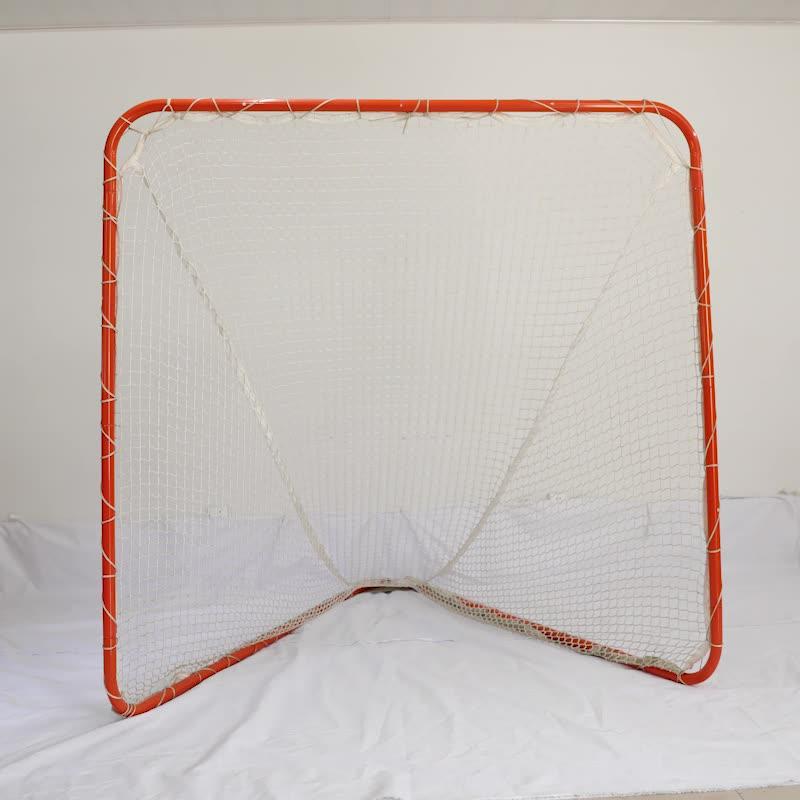
Review what lies beyond the backstop during play. Allowing balls to clear the enclosure risks damage or injury. Aim for sufficient netting height so no shots can escape over to threaten surrounding property, vehicles, or people in the area.
Fixed vs. Portable Backstops
Fixed permanent backstops typically allow greater heights up to 30 feet, since support posts are concreted permanently into the ground. Portable backstops have height limitations based on stability, so taller freestanding designs require outrigger supports and sandbags.
Netting Material
Use thicker braided polyethylene or high tensile strength netting at higher heights for greater durability. This helps the enclosure maintain shape and stand up to years of shots. Lighter netting sags over time, allowing balls over the top.
Angled Extension Arms
Some backstops feature angled extension arms running along the top front of the enclosure. This expands aerial coverage and prevents lob shots from going over the net. Opt for backstops with extension arms for increased protection.
Pole Padding
For safety, generously pad any vertical support poles on fixed backstops located within the playing area. This cushions unavoidable player collisions. Use pole padding up to at least 6 feet to protect head impacts.
Choosing the ideal lacrosse backstop netting height requires balancing shot containment, safety, playability, and cost factors. While regulation 20 foot enclosures work well for many scenarios, also consider your specific space usage, skill levels, and surroundings when selecting netting height. The goal is keeping all errant balls contained safely within the net.
Ensure Backstop Nets Have Adequate Width For Sideline Safety
In addition to sufficient height, an important factor when investing in lacrosse backstops is choosing adequate netting width. Side-to-side coverage containing shots from missing the goal mouth entirely is key for full field protection. Consider the following factors when determining the optimal lacrosse backstop enclosure width for your needs:
Minimum 10 Feet Width
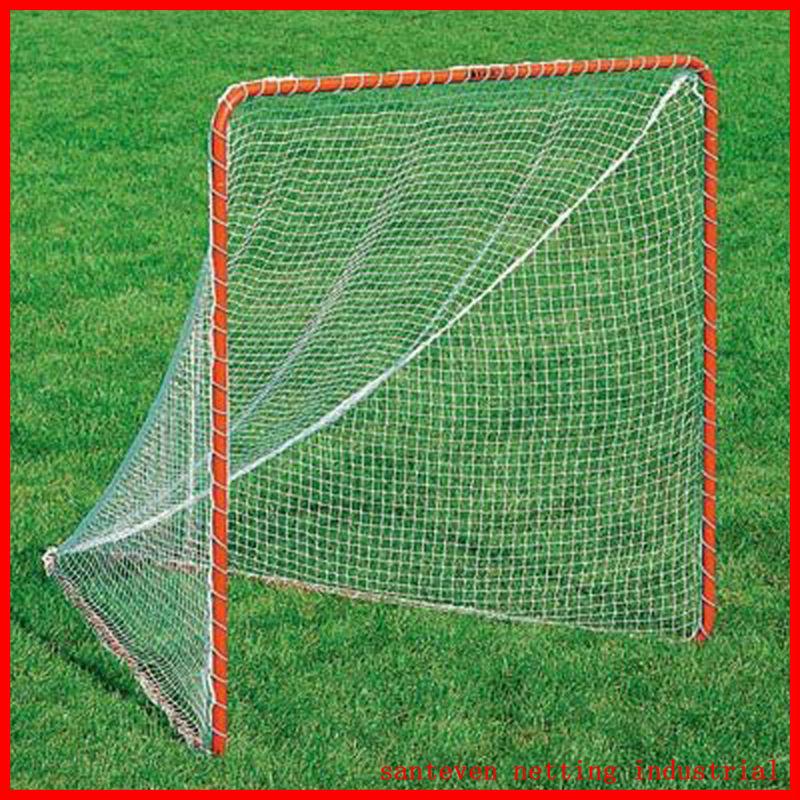
Most lacrosse backstops are at least 10 feet wide on each side of the centered goal. This provides 20 feet of total lateral protective coverage to stop most missed shots. For higher skill levels, extending width to 15 feet per side (30 feet total) helps contain more powerful sideline launches.
Field Width
Consider the total width of your lacrosse playing surface. Wider fields demand greater backstop side coverage to prevent missed shots from leaving the bounds. Indoor box lacrosse needs less width since all shots remain close to the netted walls.
Sideline Usage
Account for team bench, spectator, and personnel usage along the sidelines. Greater activity close to the field boundary requires wider backstop side netting for protection. Also consider proximity to roads, buildings, or other side areas needing shielding.
Surrounding Buffer Space
Review the clear space behind side boundaries when factoring sufficient coverage. Tighter field boundaries ringed by fences or walls need less backstop width. Wider open surroundings require greater side-to-side width to compensate for unobstructed missed shots.
Backstop Positioning
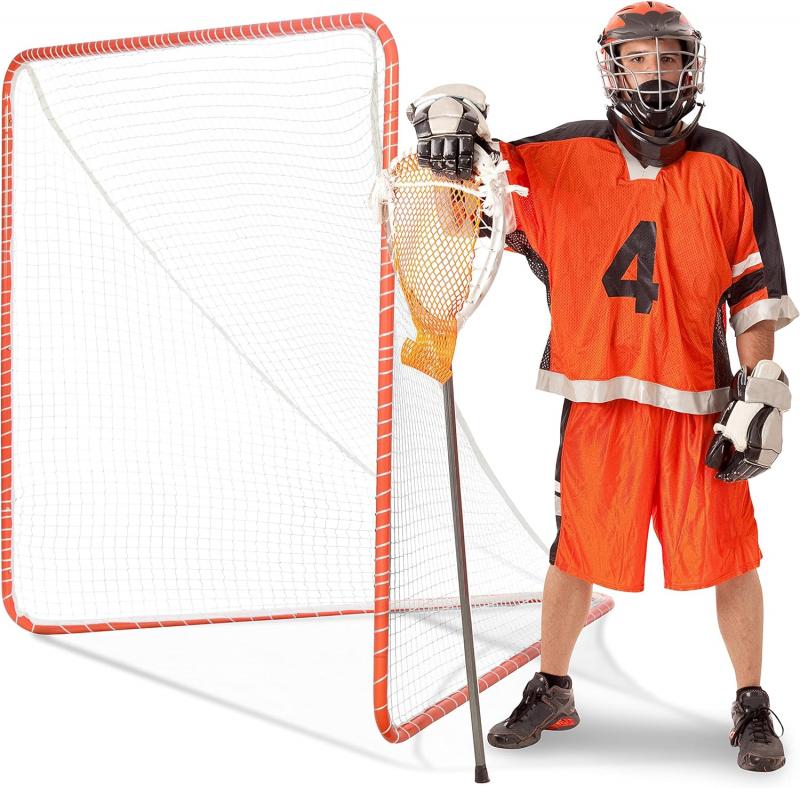
Consider how far off the end line you will position the backstop behind goals. Widening the starting width provides more complete coverage for backstops located further from the goal mouth. Closer positioning allows slightly narrower width.
Skill Level
Account for the power and wildness of shots at different levels when planning backstop width. Youth and beginners need less width. Intermediate and advanced players require greater side coverage to contain faster and more errant shots.
Number of Fields
For facilities with multiple adjacent fields, allow for greater backstop width to prevent sideline shots from reaching neighboring fields. This added coverage protects players and prevents game interference.
Portable Backstop Stability
For portable folding backstops, extremely wide side netting can compromise stability in winds. In high winds, narrow the span a few feet per side if necessary to prevent tipping while still protecting sidelines.
Netting Dividers
Some backstops feature vertical net dividers than can be extended from the sides to sub-divide a single enclosure for multiple fields. This extra segmentation further shields individual field boundaries.
While often overlooked, lacrosse backstop width is an important safety factor. Choosing adequate sideline netting coverage contains shots from missing the goal and threatening surrounding areas. Consider all field dimensions, buffer spaces, usage factors, and skill levels when selecting optimal width to maximize protection for your specific needs.
Verify Backstops Meet Necessary Lacrosse Net Requirements
When investing in new lacrosse nets and backstops, you want assurance the equipment meets key requirements for safety, durability, and playability. Review the following essential performance criteria to verify any netting system under consideration provides everything needed for proper lacrosse goals and backstops before purchase:
Impact Absorption
Netting must withstand repeated high-velocity lacrosse ball impacts over time without compromising integrity or shape. Adequate shock absorption prevents rips, tears, and premature wear from shots. Look for durability guarantees from major brands.
Weather Resistance
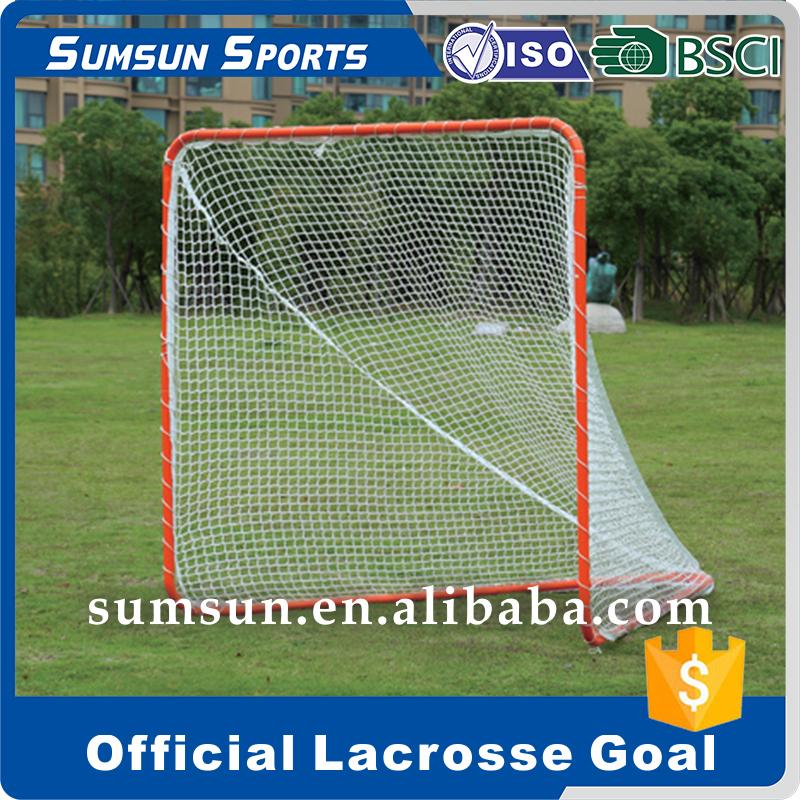
Backstops and netting left continuously outdoors must maintain function through all weather conditions. UV-resistant polyethylene materials prevent sun and heat damage. Cold crack additives allow flexibility in frigid temperatures. Waterproof coatings shed rain and dew without getting waterlogged.
Wind Resistance
Netting must remain stable and taut during windy conditions to properly rebound shots. Sturdy pole anchoring on fixed backstops prevents swaying. Portable goals require adequate sandbag or stake weights to stand fast in heavy winds.
Rebound Efficiency
Netting should provide consistent rebound trajectory and velocity to mimic live-game shot behavior. Evenly spaced knotless mesh netting rebounds shots most uniformly. Netting tightness also affects ball return speed and precision.
Visual Accuracy
Crisp see-through netting without glare allows clear sightlines for players to practice shooting through realistic field-of-view conditions. Opacity also allows coaches and players to see ball movement within the netting for coaching and training.
Stability
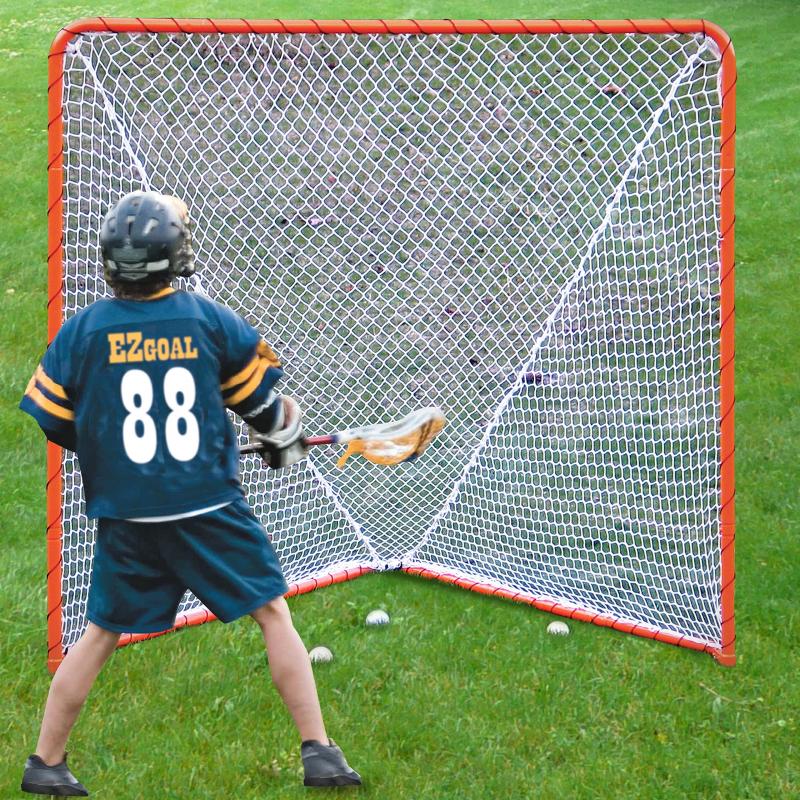
Frames must keep netting taut and prevent any sagging over time as shots loosen the mesh. Sturdy steel, aluminum, or composite poles on fixed backstops remain stable. Portable goals need effective ground anchors like angled outrigger feet to stay grounded.
Safety
With players colliding into goals, backstop netting edges and frames should utilize pinch-proof fasteners and ample protective padding. Nets must also completely enclose backstops with no gaps to prevent errant balls leaving the practice area.
Mobility
Portable goals should include built-in transport wheels and enable quick folding and setup by one person. Easy net attachment and takedown maximizes portability convenience.
Shot Containment
Backstops must provide complete off-target shot containment customized for your skill level. Adequate width, height, side netting, and backing net prevent missed shots from leaving the goal area.
Year-Round Use
Nets and frames must withstand the rigors of year-round seasonal play and practice. Material integrity should persist season after season with minimal degradation or maintenance required.
Don’t settle for subpar lacrosse nets and backstops. Carefully verify that any system under consideration meets or exceeds all the above performance benchmarks before purchasing. Investing in goals and backstops that satisfy these standards ensures you receive high-quality equipment engineered for safety, playability, and longevity.
Compare Costs of Different Lacrosse Goal & Backstop Options
When budgeting for new lacrosse nets and backstops, cost comparison is an important part of the buying decision. Prices can vary significantly based on materials, sizes, portability, and installation factors. Review these key considerations when comparing options to find goals and backstops matching your performance needs and budget:
Fixed vs. Portable
Fixed, permanently installed lacrosse goals carry higher upfront costs but provide long-term value. Materials for inground poles and field preparation add expense. Portable goals require no installation and offer more flexibility for less money.
DIY vs Professional Installation
Professionally installed fixed backstops ensure proper field engineering and concrete work but cost thousands more than DIY inground installation. If installing goals yourself, factor rental fees for diggers and concrete equipment.
Youth vs. Regulation Size
Full regulation goals with official 6’x6’ frames cost more than scaled-down youth sizes. Smaller backstop enclosures also save on netting material costs. But youth gear will need replacement sooner.
Netting Material
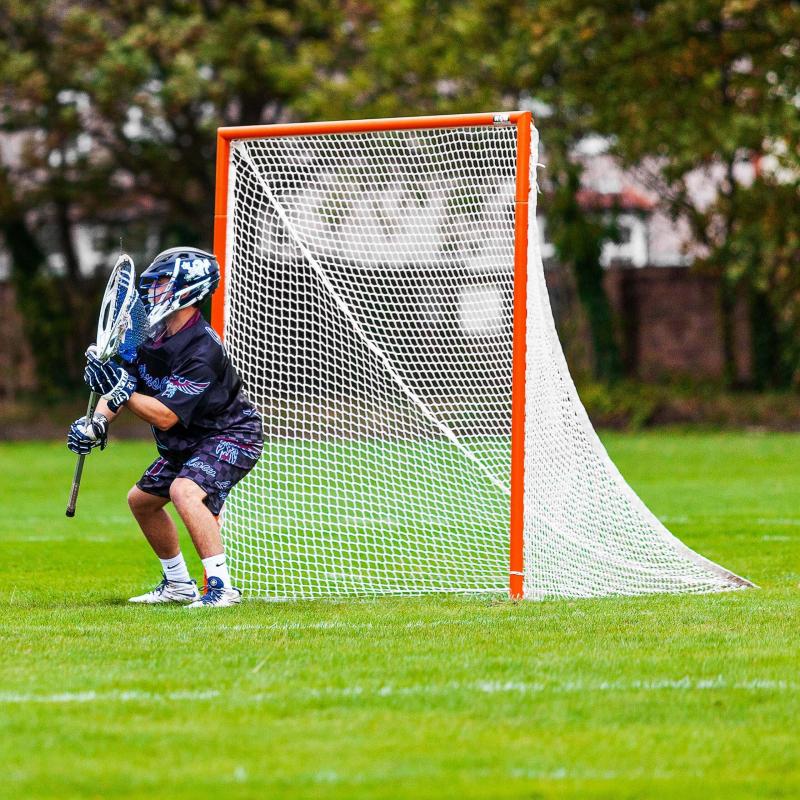
Premium weatherproof polyethylene lacrosse netting is pricier than basic nylon but offers greater durability and lifespan per dollar. More expensive knotless netting provides better rebound consistency too.
Backstop Size
Larger backstop enclosures require more netting material and longer frames and poles, increasing costs. Consider minimum safe sizes based on your needs to optimize value.
Replacement Nets vs. New Goals
Refitting old frames with new replacement lacrosse netting costs less than buying new goals and backstops. But upgrading goals improves performance and containment.
Brand Name vs. Generic
Trusted sports brands like Brine and STX charge premium pricing but deliver better construction, materials, and warranties. Generic nets may save upfront but won’t last.
Team Customization
Full visual customization like logos, school colors, and graphics costs extra. Team branding adds expense but boosts team identity and pride.
Portability Features
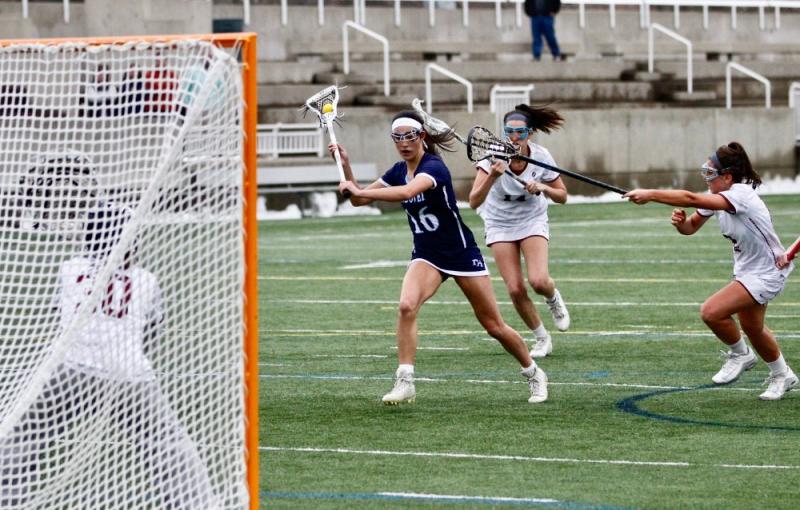
Options like folding frames, wheels, and carrying cases add convenience for transport but also increase portable goal costs. Assess how often you’ll relocate nets.
Multi-Sport Use
Nets designed for lacrosse, hockey, and soccer training maximize value from goal investment but have small performance tradeoffs.
Compare all cost factors like longevity, quality, customization, installation, sizing, and features to get the best lacrosse backstop and net system your budget allows. Prioritize safety and playability rather than focusing only on lowest cost.
Examine Backstop Nets’ Durability Against Weather & UV Rays
An important consideration when purchasing lacrosse nets and backstops is ensuring the netting holds up against outdoor sun, rain, heat, and other environmental factors. Repeated exposure can damage lesser quality net material, degrading safety and playability. Use this guide to examine net weathering and UV durability before buying:
Sunlight & UV Resistance
Synthetic polyethylene and nylon lacrosse netting are vulnerable to UV damage from prolonged sun exposure. Look for UV inhibitors incorporated into quality netting material. Knotless netting with smaller holes also resists UV degradation better.
UV Coatings & Treatments
Advanced lacrosse nets feature UV-blocking coatings to reflect sunlight rather than absorb it. These treatments prevent premature wear and extend net lifespan. Reconfirm the manufacturer’s UV protection warranty length.
Marine-Grade Materials
Some premium nets utilize marine-grade polyethylene or specially UV-treated nylon designed to withstand years in harsh ocean conditions without deteriorating. This hardwearing material lasts seasons longer.
Heat & Cold Durability
Quality lacrosse netting remains flexible through temperature extremes. Cold crack additives allow use in frigid conditions without splintering. Heat-stabilized formulas prevent sagging in summer sun.
Weatherproof Construction
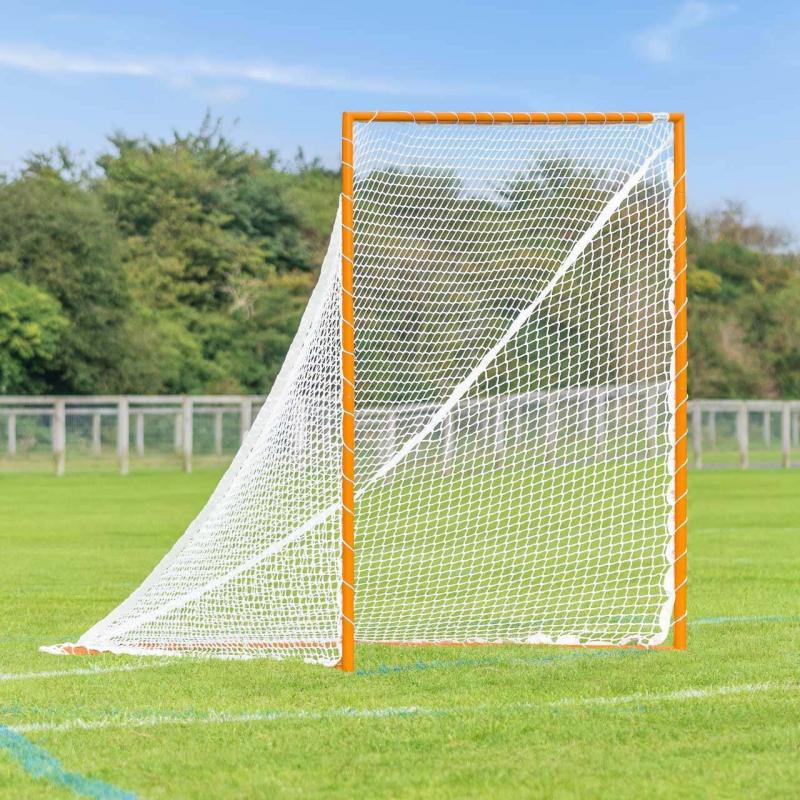
Nets designed for all-weather use feature interwoven weatherproof polyethylene strands and reinforced double stitching. This prevents moisture accumulation and maintains shape despite wet conditions.
Water Shedding
Premium lacrosse nets utilize mesh coatings that cause water to bead up and run off the netting without pooling or soaking in. This keeps the netting performing consistently whether wet or dry.
Rustproof Frames
Frames should utilize rustproof aluminum alloy, stainless steel, or powder-coated materials resistant to chips, peeling, or corrosion despite outdoor exposure.
Wind Resistance
Fixed goals require deep concrete anchor poles and taut net installation to stand up to wind gusts. Portable nets need sufficient stabilizer weights low on the frame to prevent blowing over.
Manufacturer Warranty
Reputable lacrosse net brands offer at least 1-year warranties against UV and weather degradation. This demonstrates confidence in product durability.
Don’t settle for lacrosse nets that will rapidly deteriorate with outdoor use. Carefully inspect netting UV resistance, weatherproofing coatings, and frame construction before buying. Investing in durable all-weather goals will save replacement costs and maintain safety.
Check Lacrosse Goal Anchors Can Handle High-Speed Shot Impacts
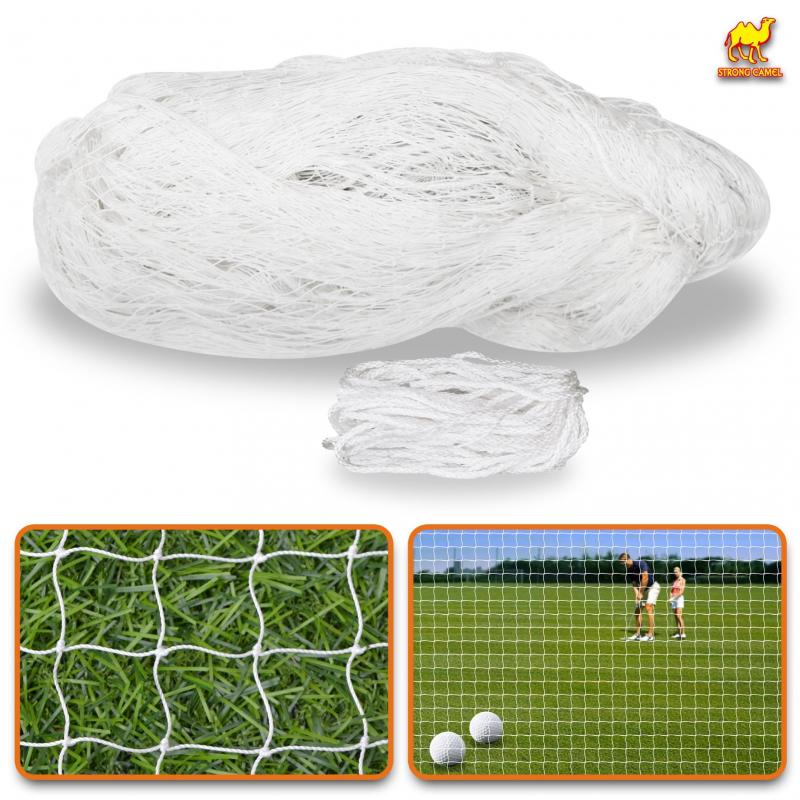
A critical safety element when purchasing lacrosse nets is verifying the goal anchoring can withstand repeated high-velocity ball impacts. Top-tier nets utilize heavy-duty materials from industrial-grade concrete for in-ground anchors to robust portable frame weights. Follow this guide when assessing lacrosse goal shock absorption and impact resistance:
Anchor Pole Materials
Fixed lacrosse goals require steel or iron anchor poles concreted deep underground. This prevents swaying or loosening over time from ball impact forces. Aluminum lacks sufficient strength for permanent inground installation.
Pole Depth
According to safety recommendations, permanent lacrosse goal anchor poles should be buried a minimum of 48” deep and encased in concrete for stability. Deeper pole depth provides greater impact absorption.
Concrete Strength
Anchor pole holes must be filled with high-compressive strength concrete like commercial grade Quickrete. This prevents cracking or crumbling around poles from repeated impacts.
Pole Padding
Fixed goal poles within the playing area should be generously foam padded up to six feet high to reduce collision forces. Check padding annually for compression spots indicating pole movement.
Net Attachment Points
Nets should be securely attached to anchor poles using heavy-duty miclon straps with steel cinch buckles. This prevents net slippage or detachment from pole vibration.
Portable Frame Weight
Portable goals must have adequate weight low on the frame to counterbalance ball impact energy. Use sandbag weights or water-fillable bases tied tightly to prevent tipping.
Outrigger Feet
Outrigger stability feet extending out the back of portable frames provide broader counterbalance against ball impacts and reduce frame rocking.
Ground Stakes
Auger-style spiral ground stakes help lock portable goal frames in place to withstand impacts. Longer 18-24” stakes driven deep provide maximum holding power.
Net Attachment Points

Portable net attachment hooks or loops must be durable and designed to avoid metal fatigue failure over time. Inspect for cracks in plastic components after seasons of use.
Don’t risk collapsed frames or loose netting caused by inadequate lacrosse goal anchoring. Verify any new nets meet safety recommendations for pole materials, net attachment, padding, and frame ballast to handle routine high-speed shot impacts.
Select Backstops With Padding to Prevent Injuries From Missed Shots
An important safety consideration when buying lacrosse nets and backstops is choosing options with ample protective padding. Missed shots frequently strike frame poles and perimeter netting edges, posing impact risks. Padded backstops provide essential protection, especially for children and youth players.
Pole Padding
All vertical poles on fixed backstops located within field boundaries must have thick foam protective padding up to at least six feet high. Pad full circumference to cushion unavoidable player collisions.
Pole Pad Thickness
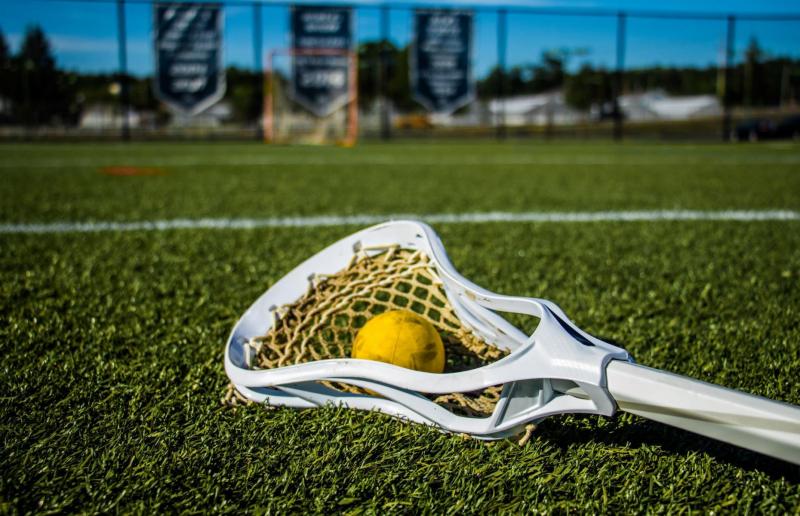
According to safety standards, goal pole padding should be a minimum of 1.5 inches thick. More aggressive play may require 2-3 inch padding for sufficient energy absorption. Check pad compression regularly.
Bottom Padding
Pad protection should extend to the bottom pole edge to prevent leg injuries from inadvertent contact with anchor bases during play near goals.
Attachment Straps
Pad attachment straps must fully wrap poles with no gaps and utilize heavy-duty clasps to prevent spinning or detachment from repeated impacts.
Regular Inspection
Visually inspect pads before each use for wear, detachment, or thin spots. Immediately replace compromised padding to maintain protection.
Perimeter Padding
Backstop frames adjacent to playing areas also merit protective padding to cushion inevitable missed-shot collisions in the enclosure corners.
Top Padding
Angled pole extensions across backstop tops pose a hazard to tall players. Generously pad undersides and edges despite limited contact for proactive injury prevention.
Portable Frame Covers
Entire frames of folding portable goals should be padded with foam covers to prevent contact injuries from players or ball impacts.
Rebounder Training Padding
Freestanding lacrosse rebounder training tools must be fully padded on all sides to prevent unintended player contact with metal or plastic components.
Don’t overlook sufficient protective padding when buying new lacrosse nets. Pole padding on fixed goals and frame padding on portable backstops provide essential impact protection to minimize safety risks inherent around aggressive lacrosse play.
Look For Quick-Release Systems For Easy Net Installation & Storage
An important convenience factor when purchasing lacrosse nets and backstops is looking for goals with quick-release net attachment systems. Simple installation and takedown saves time and hassle in setup, transport, and seasonal storage. Consider these tips for utilizing quick-connect lacrosse net technology:
Push-Button Net Clips
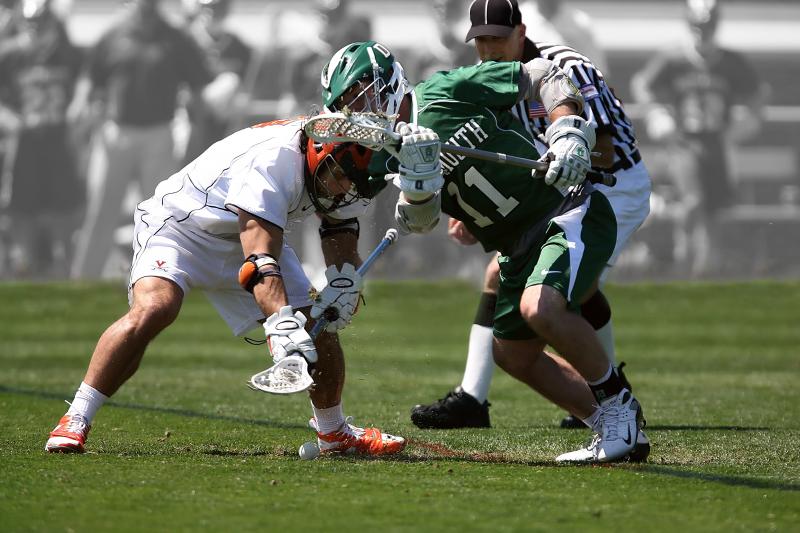
Advanced net attachment hooks feature spring-loaded push buttons to easily detach heavy-duty net clasps from goal frames. This allows quick on/off installation without knots or lacing.
Carabiner-Style Clasps
Secure carabiner-type clips provide quick snap-in net connection and release from frame loops. Carabiners make net attachment and swaps faster and simpler.
Perimeter Pole Loops
Backstop frames and goals with pre-installed net joining loops simplify setup by eliminating knot-tying. Perimeter loops allow rapid clipping of net borders.
Color-Coded Straps
Numbered or color-coded loop straps help identify net edge sections for proper positioning during installation and takedown.
Tools-Free Assembly
Look for portable goals and backstops engineered for quick tool-less net connections. This enables faster setup and breakdown without lugging tools.
Lightweight Components
Well-designed no-tool systems utilize light framing and netting that is easily managed by one person for quick changeovers and maximum portability.
Net Storage Bag
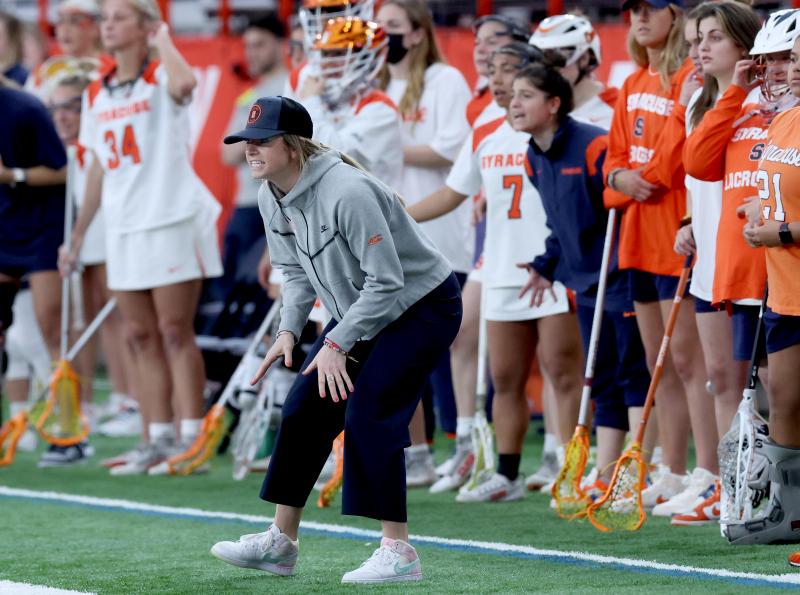
Choose backstops with an included net storage duffle or wheel bag. This eases net transport and avoids tangles or damage between uses.
Off-Season Net Removal
Removing lacrosse netting fully from frames during the off-season prevents UV damage. Quick-release systems make seasonal removal and reinstallation simpler.
Net Repair & Replacement
Quick-release clips allow damaged net sections to be rapidly swapped out as needed between games or practices to maintain playability.
Investing in lacrosse nets and backstops with quick-connect technology eliminates lacing and knotting hassles while providing faster setup, takedown, transport, maintenance, and seasonal storage. Choose goals with push-button, carabiner, or tool-free attachments for maximum convenience.
Find Backstops With Target Circles to Improve Shooting Skills
An excellent training aid to look for when buying new lacrosse nets and backstops are options featuring printed or sewn-in shooting target circles. Aiming at focused target areas accelerates development of shooting accuracy, power, and precision. Consider these benefits of lacrosse backstops with shooting targets:
Bullseye Targets
Circular bullseye targets challenge shooters to tighten shot precision and groupings. Progressively smaller concentric rings allow honing accuracy.
Shooting Squares
Smaller square targets floating within larger squares isolate a defined shooting area for repetitive accuracy practice.
Practice Angles
Targets positioned in the corners and sides of backstops improve off-angle shooting skill from beyond the crease area.
Elevated Targets
Raised target patches promote developing improved high-shot and upper-corner finishing abilities critical around the goal.
Range Variety
Vary shooting distances and lob trajectories to hit targets. This enhances shot versatility, velocity control, and placement.
Repetitive Focus
Repeatedly aiming for the same target zone ingrains muscle memory for instinctual shooting precision in game pressure situations.
Accuracy Feedback
Seeing misses on the target face provides instant visual feedback to self-correct shooting form and follow-through.
Goalie Training
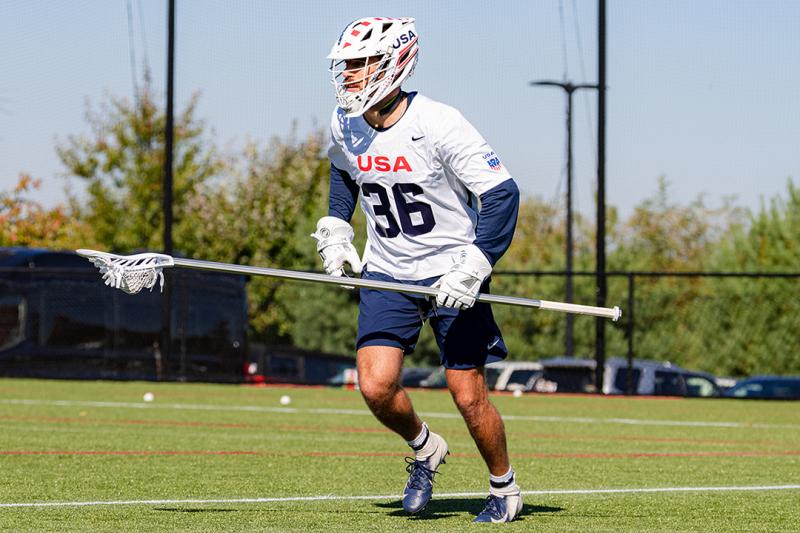
Targets allow goalies to master positioning on angle shots and dial in cut-angle reaction time.
Ball Control
Catching difficult off-line rebounds off targets improves concentration, cradle control, and handling.
Shot Power
Increase shooting speed and power while still aiming accurately for small targets from farther out.
Investing a few extra dollars for lacrosse backstops with built-in shooting targets provides big training benefits for all skill levels. Targeted practice accelerates shooting accuracy, precision, and power essential for game-time success.
Make Sure to Get Ball Stop Netting to Catch Wide Shots
An important add-on to consider when purchasing lacrosse nets and backstops is getting extra ball stop perimeter netting to catch wild missed shots. Standard backstops often leave open gaps in the corners and along the sidelines. Additional barrier netting enhances safety and convenience.
Sideline Netting
Install side ball stop nets perpendicular off the backstop frame. These catch shots sailing past the pipes before they leave the field of play.
Corner Netting

Erect small square net walls in the open corners of the backstop enclosure to contain skipped shots headed out of bounds.
Behind-Goal Netting
Mount a net directly behind the goal frame to catch shots missing high or wide of the actual goal mouth.
Deflected Shots
Stopped and deflected shots can ricochet unpredictably. Extra netting absorbs these errant balls before they fly out of control.
Safety First
Additional barrier nets provide an added layer of protection for surrounding areas against dangerously missed lacrosse shots.
Uninterrupted Play
Players don’t have to continuously chase stray balls outside the backstop, allowing more uninterrupted practice and games.
Ball Recovery
Stopped shots drop right into the contained backstop area for easy retrieval to resume play quickly.
Reduced Equipment Damage
Containment nets prevent missed shots from breaking facility lights, windows, vehicles, or other items nearby fields.
Versatile Placement
Smaller ball stop panels attach almost anywhere on sides or corners needing containment coverage.
Wind Protection
Additional low side and corner netting also helps block wind, allowing better shot control during gusty conditions.
Every lacrosse field setup presents unique containment challenges. Investing in supplemental ball stop netting tailored to your specific facility provides an inexpensive added layer of safety, convenience, and uninterrupted play.
Read Customer Reviews to Choose Ideal Lacrosse Nets & Backstops
One of the best ways to evaluate different lacrosse net and backstop options is to read through customer reviews before making a purchase. Real first-hand feedback provides valuable insight into product quality, durability, value, and ease of use. Follow these tips for getting the most out of customer reviews when shopping for lacrosse goals:
Review Quantity
Look for netting from top brands with hundreds or thousands of customer reviews. More feedback provides a diverse range of experiences to assess.
Verified Purchases
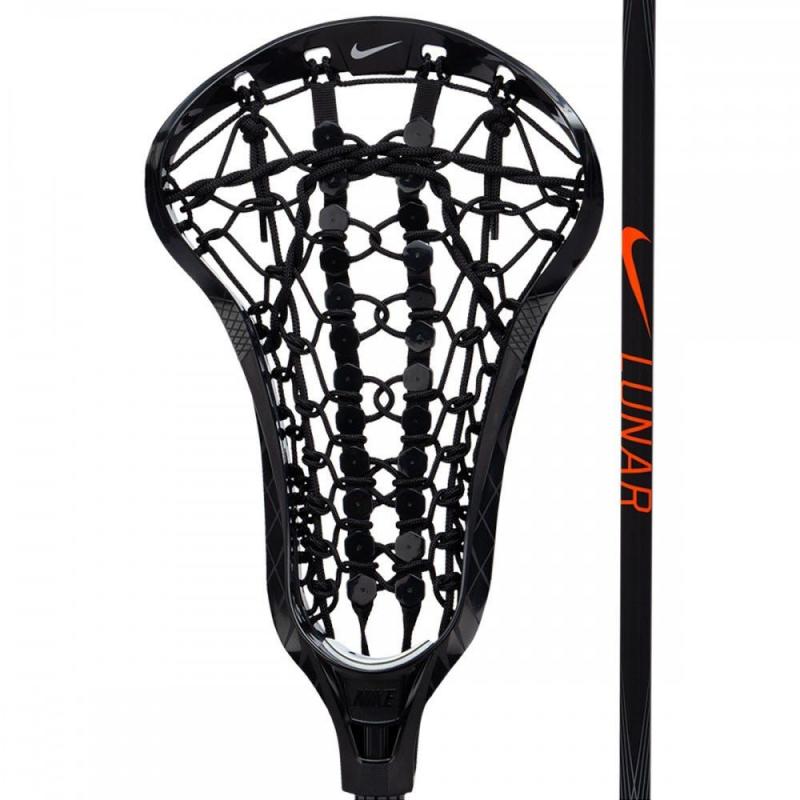
Focus on reviews confirmed from actual paying customers, not general website visitors. This ensures authenticity.
Rating Analysis
Scan average star ratings, but read the full reviews for context. Low individual ratings often reflect limited user error or atypical defects.
Durability Notes
Players reviewing gear after months or years of use can better speak to long-term durability compared to initial impressions.
Ease of Assembly
Note any reviews detailing difficulties with complex assembly instructions, unclear hardware, or stabilizing portable frames.
Netting Rebound
Players highlight whether netting provides consistent ball rebound comparable to game action for honing skills.
Weather Resistance
See if nets live up to claims of all-weather durability through rain, sun, heat, and winter play based on real experience.
Safety Issues
Watch for any concerns with stability, sharp edges, breakage, or inadequate padding leading to player injuries.
Portability Problems
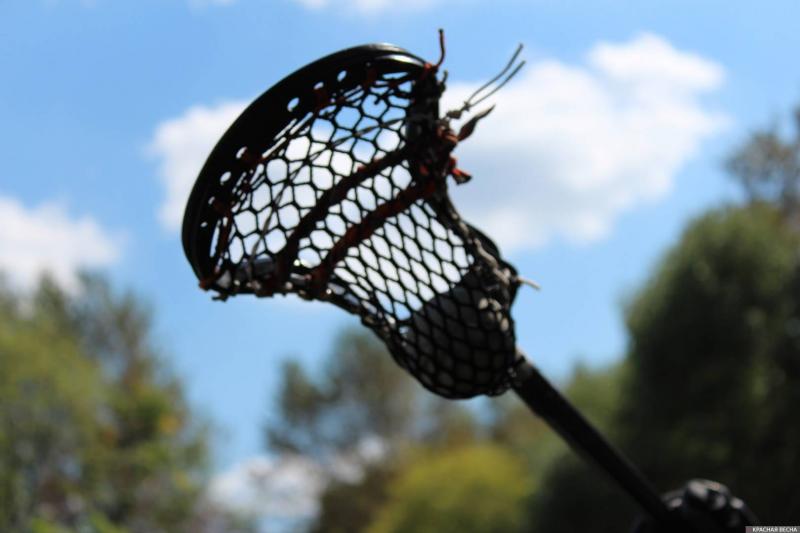
Frequent moves should be easy for portable goals. Call out reviews mentioning heavy components or wheels that catch or stick.
Vendor Response
A responsive vendor actively replying to resolve user problems demonstrates good customer service.
Reading through detailed customer reviews provides a wealth of helpful information and reveals pros and cons that specifications and photos can’t. Let other players’ experiences guide you towards high-quality lacrosse nets and away from problematic equipment.
